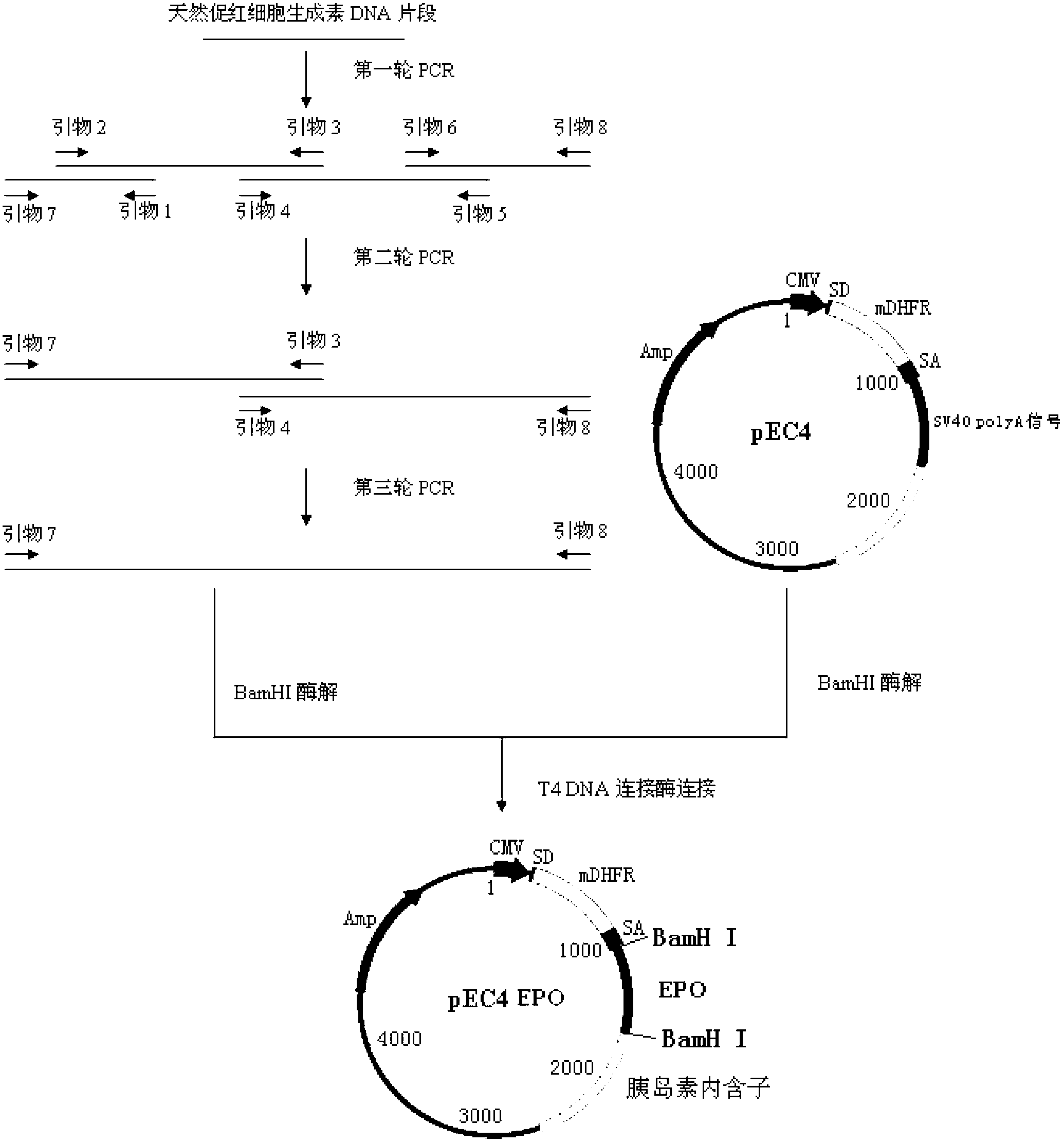Hemopoietin analogue
A technology for erythropoietin and analogs, applied in the field of recombinant plasmids and host cells, erythropoietin analogs or their variants, and can solve problems such as decreased in vitro activity
- Summary
- Abstract
- Description
- Claims
- Application Information
AI Technical Summary
Problems solved by technology
Method used
Image
Examples
Embodiment 1
[0047] Example 1: Construction of Human Erythropoietin Analog DNA Fragment
[0048] There are three natural N-glycosylation sites in the amino acid sequence of human erythropoietin, which are respectively located at positions 24, 38 and 83. The positions that promote erythropoietin to produce additional glycosylation sites can be 2, 3, 4, 28, 30, 88 (see figure 1 ).
[0049] Combination between mutation groups for the above positions, such as constructing [Asn 2 Gly 3 Thr 4 ], [Asn 28 Thr 30 ], [Asn 88 Gly 89 Ser 90 ], adding N-glycosylation sites at positions 2, 28, and 88, and enhancing the glycosylation at this position by changing the amino acid sequence of the middle position or the position before the glycosylation site.
[0050] For primers additionally adding N-glycosylation site mutations, refer to SEQ ID NOS: 2-85. Using these primers, the erythropoietin analogue DNA fragment after mutation can be obtained by performing polymerase chain reaction (PCR) with ...
Embodiment 2
[0075] Example 2: Asn 2 Gly 3 Thr 4 Preparation of EPO
[0076] A. Construction, screening and cultivation of engineered cells
[0077] The plasmid pEC4-N1 constructed according to the method of Example 1 was transfected into CHO cells. The host cells were purchased from the American Type Culture Collection (ATCC) and were dihydrofolate reductase-deficient Chinese hamster ovary cells (CHO dhfr-). Culture the cells in a 100mm culture dish, and when the cells grow to 60-95% full, rinse the cells with serum-free medium, add a transfection mixture composed of 5ml serum-free medium, 10μg pEC4-N1, and 60μg lipofectamine , cultured at 37°C for 4 hours, aspirated the medium, added MEM medium containing 5% fetal bovine serum, and cultured overnight at 37°C. Then add MTX to the culture medium and continue to culture for 10-14 days until resistant clones appear. The cultured cells of the resistant clone were digested with trypsin, the MTX concentration was increased, and the resist...
Embodiment 3
[0086] Example 3: Asn 3 Phe 4 Ser 5 Preparation of EPO
[0087] A. Construction, screening and cultivation of engineered cells
[0088] The plasmid pEC4-N2 constructed according to the method of Example 1 was transfected into CHO cells. The host cells were purchased from the American Type Culture Collection (ATCC) and were dihydrofolate reductase-deficient Chinese hamster ovary cells (CHO dhfr-). Culture the cells in a 100mm culture dish, and when the cells grow to 60-95% full, rinse the cells with serum-free medium, add a transfection mixture composed of 5ml serum-free medium, 10μg pEC4-N2, and 60μg lipoFectamin , cultured at 37°C for 4 hours, aspirated the medium, added MEM medium containing 5% fetal bovine serum, and cultured overnight at 37°C. Then add MTX to the culture medium and continue to culture for 10-14 days until resistant clones appear. The cultured cells of the resistant clone were digested with trypsin, the MTX concentration was increased, and the resista...
PUM
 Login to View More
Login to View More Abstract
Description
Claims
Application Information
 Login to View More
Login to View More - Generate Ideas
- Intellectual Property
- Life Sciences
- Materials
- Tech Scout
- Unparalleled Data Quality
- Higher Quality Content
- 60% Fewer Hallucinations
Browse by: Latest US Patents, China's latest patents, Technical Efficacy Thesaurus, Application Domain, Technology Topic, Popular Technical Reports.
© 2025 PatSnap. All rights reserved.Legal|Privacy policy|Modern Slavery Act Transparency Statement|Sitemap|About US| Contact US: help@patsnap.com



